TS
boleroes11
Hybrid electric and fuel cells
Hybrid electric and fuel cells
Yesterday, 05:52
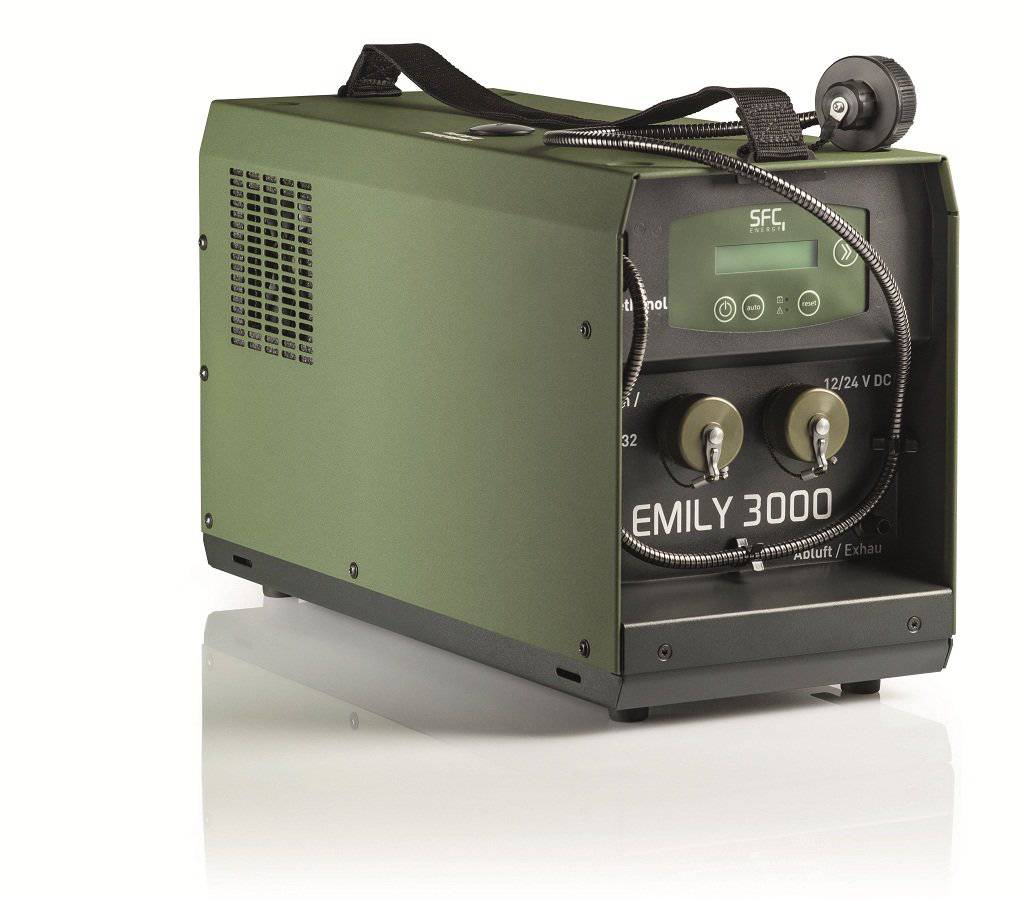
EMILY fuel cell system 3000 has a rated output of 125 W and a charge capacity day 6 kWh. It can be recharged several batteries or perform the functions of the field generator. The system has been specifically designed for military applications including test scenarios in which data on new defense systems must be collected and evaluated in field conditions
Ultimately, the hybrid power plant offering comparable or even better benefits for armored vehicles. While fuel efficiency by at least historically top of the list was not mandatory features of armored vehicles, however, it does increase the distance and / or duration of a given fuel capacity, increases load capacity, fire protection or for a given total power weight and generally reduce the overall logistics burden on machine park.
Hybrid electric drive can play an important role in the future of military vehicles, but the relevant cancellation and a reduction of many defense programs (do not forget the famous FCS and FRES) and the struggle for urgent compliance with the requirements for protected vehicles pushed its introduction to military vehicles indefinitely.
However, when the candidates for the US ground combat vehicle GCV (Ground Combat Vehicle) were announced in January 2011, one of them was a project team from BAE Systems / Northrop Grumman hybrid electric power unit with the system EX-DRIVE from Qinetiq. This can be viewed as a sort of a gamble because none of the applicants for the program to easy for tactical vehicle JLTV (Joint Light Tactical Vehicle), which included electric and hybrid, did not pass the final due to the fact that in the US Army from the available data believe that the technology for the machine is not yet ripe enough at this point of time. Those, however, the history of hybrid electric vehicles in ground combat has a sufficient number of programs to develop and demonstrate the technology. There is something inexorable and inevitable in the global effort to implement a technology that promises to save fuel, improve performance and vitality and at the same time meet the growing demand for on-board electricity. This is undoubtedly reinforced by parallel developments in the automotive industry, is pushing legislation on environmental protection.
Manufacturers and suppliers of military vehicles systems to them a lot invested in this technology, often pushed by the above-mentioned kind of ambitious government programs before faced with extreme uncertainty inherent in long-term government plans. Companies AM General, BAE Systems, General Dynamics, Hagglunds, MillenWorks and Qinetiq developed hybrid electric drives for the British, American and Swedish programs, while the Nexter working on a program to develop technology ARCHYBALD, designed for heavy-duty vehicles, civilian and military.
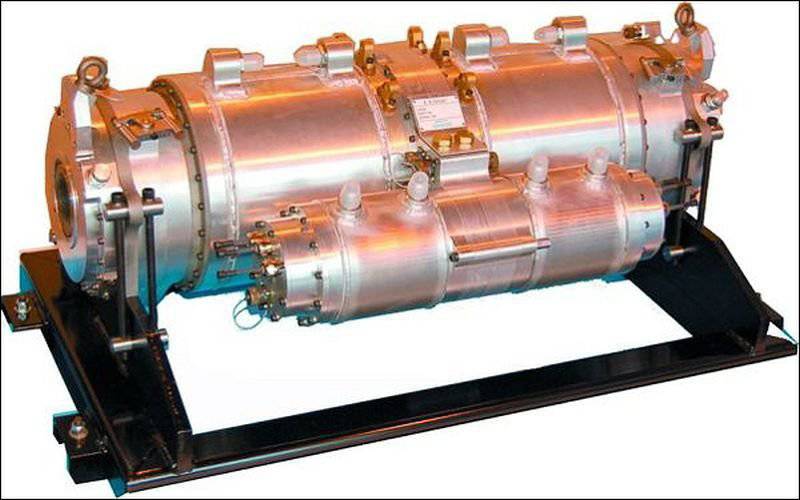
Motorized mission EX-DRIVE for tracked vehicles from QinetiQ, lightweight, compact and efficient system
Hybrid precursors
Hybrid power plants firmly settled in warships, particularly on submarines, trains and heavy trucks used in mining and open-cast mining. In these applications, a prime mover such as a diesel engine, gas turbine, or even both systems actuated generator which generates current for the drive motor and battery charging. Some systems include a transmission for transmitting the mechanical energy to side gears, while in others they are completely eliminated.
In warships hybrid power plants allow the use of complex and widely varying velocity profiles, while the prime mover operated in an effective speed range: electric motors for silent movement, diesel engines for normal traffic, gas turbines to speed, etc. Submarine actuated conventional method can not start a prime mover during the dive (unless a snorkel) and therefore must rely primarily on airindependent battery or other power unit. Giant digging motion relying on enormous torque from zero r / min produced in electric motors due to the fact that the mechanical transmission, which could perform a similar operation will be huge, complex and expensive. Trains are the same problem even more so because they must pull a few hundred tons per location in many cases up to speeds in excess of 150 miles per hour.
The hybrid propulsion system can save fuel by allowing the use without derating smaller more economical prime mover because the system when fully retracted driver pedal "gas" complements the engine motors, powered by battery. Electric actuators also allow drown prime mover when driving at low speeds, when it may be relatively ineffective. Modern hybrid vehicles can also accumulate kinetic energy (for example by the regenerative braking system) and used to charge its batteries. Additional savings are achieved through the work of the prime mover most of the time in the most efficient speed range, as well as the use of any additional energy for charging the battery and / or powering on-board electricity consumers.
Modern military machine requires more electrical power for communication systems, command and control equipment, sensors, surveillance and reconnaissance, such as optoelectronics and radar, remotely controlled weapon stations and silencing of improvised explosive devices (IEDs). Advanced systems, such as electric armor, further increase the consumption. Using all the installed power for the operation of electrical systems, in theory at least, better than to have a single system for motion and another for specialized equipment.
More and more emphasis is placed on the ability to monitor and collect information in counterinsurgency tasks, and in this regard, requirements for noiseless observation put forward in a growing number of programs for armored vehicles. This further increases the importance of the electric power consumption and making the fuel cells more attractive.
Electric hybrid system are divided into two broad categories: parallel and serial. In parallel systems, the internal combustion engine and an electric motor (or motors) rotating wheels or tracks through the gearbox, either separately or together. In serial hybrid systems prime mover drives the generator only. Consistent system easier, all the driving power it has to go through the motor and therefore they should be larger motors in parallel system under the same requirements for the machine's performance. Systems have been developed both.
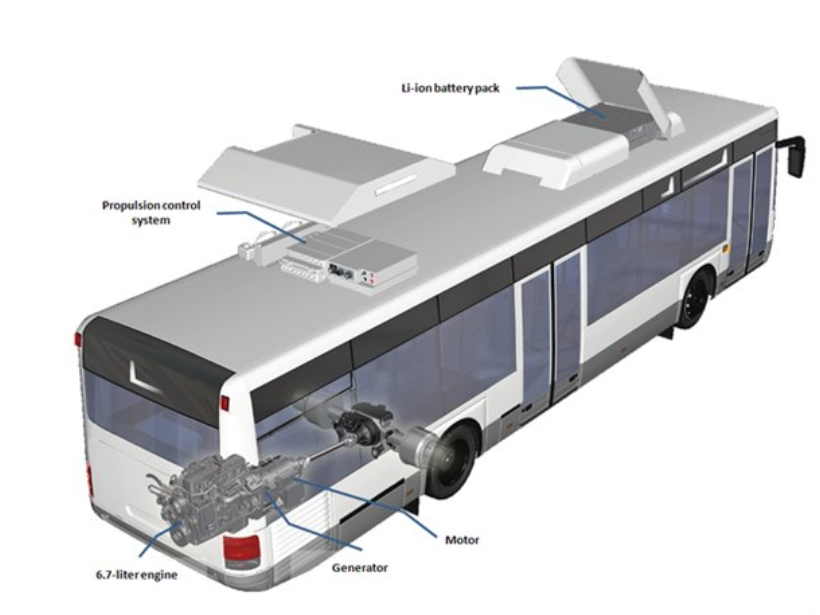

Innovations in hybrid-electric drive and in fuel cells can be taken from commercial technologies. For example, BAE Systems produces hybrid electric buses, of which the technology can be used to demonstrate the energy efficiency and improved emissions characteristics of modern hybrid electric vehicles intended for heavy-duty
Enhanced survivability
Hybrid systems also increase the survivability due to more flexible layout and exceptions drivetrain components, which could be a side shell with a landmine or IED. Especially benefit from this wheeled armored vehicles. With the integration of the drive motors in the wheel hubs, all drive shafts, differentials, drive shafts and gears, which are associated with traditional manual transmissions, deleted and replaced by the power cables so they can not be additional rounds. Excluding all of these mechanisms also allows the department to raise the crew on the ground at a given height of the machine, which makes passengers less vulnerable to explosions under the body. This type of design was used in the demonstrator General Dynamics UK AHED 8x8 wheeled version of the machine and SEP from BAE Systems / Hagglunds, tracked version of which was also made (and subsequently safely forgotten).
Electric motors built into the individual wheel allow you to control the power supplied to each wheel and is very accurate, according to the company GD UK, almost eliminates the advantages of tracks over the wheels on increased off-road terrain.
Prospective ground combat vehicle will move on tracks and offer BAE Systems / Northrop Grumman indicated that the electrical transmission EX-DRIVE from Qinetiq is lighter, more compact and more efficient than traditional transmissions. It also allows for improved acceleration, along with fault tolerance and configured for a wide range of machines and software technology adoption, the company says.
Although the system includes four permanent magnet motor, power transmission in the EX-DRIVE is not fully electric; Regen power when turning and shifting mechanical, recently using claw coupling. This scheme is a solution with a low risk, minimizing the load in engines, gears, shafts and bearings. Use of a cross-shafts for the regeneration of mechanical power in the swing mechanism is an alternative to the use of independent driving wheels in a purely electric powertrain.
One of the innovations in the heart of EX-DRIVE is the central gearbox (known as differential adjustment), which integrates the motor torque steering moment the main engine and the previously mentioned mechanical control mechanism for recovery. In addition, to minimize twisting loads it eliminates bulkiness and weight of the external cross-shaft used in traditional solutions, and other systems with hybrid power.
Advances in Electrical
Electric motors with permanent magnets are in technology, which in recent years has greatly improved the efficiency and power density of electric drive systems for all applications. Permanent magnet motors when creating a magnetic field in the stator components are based on naturally occurring powerful magnets of rare earth metals, rather than the current-carrying coils (electromagnets). This makes more efficient engines in particular due to the fact that the rotor must only supply an electric current.
Modern power electronics is also a key technology for hybrid electric vehicles of all types. Motor controllers based on Insulated-gate bipolar transistor, for example, regulate the flow of energy from a battery, generator or fuel cell stack to determine the rotational speed and the output torque of the motor. They are much more effective in comparison with electromechanical control systems and significantly improve the performance of electric variable speed - much less mature technology compared to a fixed speed electric drives, which are widely used in industry.
Company of New Jersey TDI Power is an example of an investor to invest in power electronics liquid cooling for electric and hybrid vehicles for civilian and military applications. The company produces standard modular DC converters and inverters that exceed current standards SAE and MIL.
The actuators in military vehicles will benefit from extensive research on variable speed drives for industry, fueled by the prospect of a total energy savings of about 15-30%, which can be realized if the machine with fixed mechanism will be replaced by a variable speed drive for most of the industrial customers, as set out in a recent study commissioned by the University of Newcastle UK Department of Science and Innovation. "Increasing the potential effectiveness of loads on the drive, as planned, will save the UK 15 billion kilowatt hours per year, and in combination with an increase in engine efficiency and drive overall savings of 24 billion kWh" - the study says.
One of the important ways to improve the efficiency of power transmission in any electrical system is to increase the voltage, as Ohm's law dictates that for any given power, the higher the voltage, the lower the current. Small currents can pass through thin wires that allow compact, lightweight electrical systems provide the necessary load. That is why in the national energy use very high voltage power transmission; British power grid, for example, operate their transmission lines at voltages up to 400,000 volts.
It is unlikely that the electrical systems of military vehicles will be used voltage such quantities, but the days of 28-volt electrical systems, and the like, appear to be numbered. In 2009, for example, the British Ministry of Defense has selected Qinetiq Research generation and distribution of electric power technology with 610 volts. The company Qinetiq heads the team, which includes BAE Systems and specialist in electrical machines Provector Ltd, which converted the BMP WARRIOR 2000 demonstrator capable of power the consumer with high demands 610 volts and 28 volts existing equipment. The machine is equipped with two generators of 610 volts, each of which provides twice as much energy as compared with the original generator of the machine, it actually increases fourfold output electric power Warrior.
Power for the vehicle using the fuel cell from the company SFC

Soldiers in the field need a reliable source of energy for their cars. He must submit a current board device such as a radio, communications equipment, weapons systems and optical electronic systems. But if necessary, it should also work as a charging station for soldiers on the job.
Often there is no possibility to run when the task engine to charge the battery in connection with the fact that it can reveal the location units can. Therefore, soldiers need a way to produce an electric current - quietly, consistently and independently.
EMILY 2200 system is based on the company's successful SFC fuel cell technology EFOY. Installed on the machine, EMILY unit ensures that the batteries are constantly charged. Its built-in controller constantly monitors the battery voltage and, if necessary, automatically recharges the batteries. It is silent and the only "exhaust" are water vapor and carbon dioxide in an amount comparable to the breathing of the child.
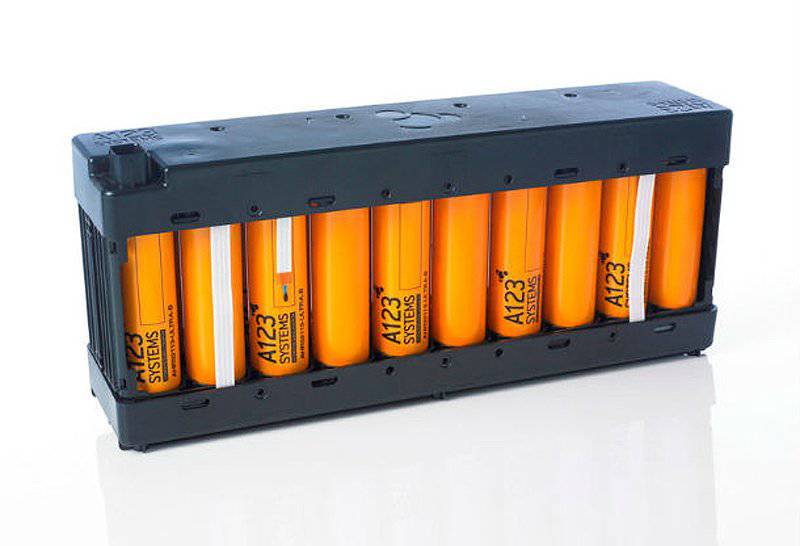
Large-scale machine requires large batteries. This package is a lithium-ion battery technology is part of a hybrid propulsion bus company BAE Systems
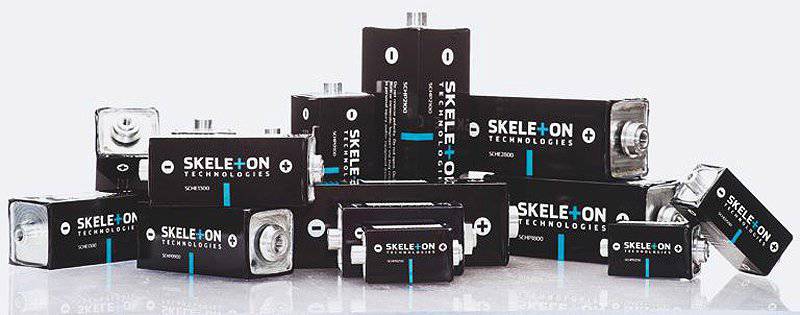
Fuel cells using chemical processes for the direct conversion of fuel into electricity with high efficiency, long seen as a technology that can be widely used in the military sphere, including bringing the car in motion, and the generation of electricity on board. However, there are significant technical hurdles that must be overcome. Firstly, to operate the fuel cells and hydrogen is mixed with oxygen from air to produce electrical power as a byproduct. Hydrogen is not as readily available, it is difficult to store and transport.
There are many examples of fuel cell powering the electric vehicles, but they are experimental. In the automotive world from Honda FCX CLARITY preparedness is probably the closest to a commercial product, but it is only available in areas where there is a hydrogen refueling infrastructure and only lease agreements. Even leading manufacturers of fuel cells, such as Ballard Power recognize the current limitations of this technology for use in automobiles. The company said that the "serial mass production of vehicles in the fuel cell is in the long run.Today, most automakers believe that serial production of fuel cell vehicles is not feasible until about 2020, due to the fact that the industry is facing issues of hydrogen distribution, optimize durability, energy density, without the possibility of starting the heating and the cost of fuel cells. " But all major automakers world are investing heavily in R & D on fuel cells, often in conjunction with the ongoing fuel cell manufacturers. Ballard, for example, is part of the Automotive Fuel Cell Cooperation, a joint venture of Ford and Daimler AG. Military pose another obstacle to the adoption of fuel cells in the form of its claim that it should work on the "logistics" fuels. Fuel cells can operate on diesel fuel or kerosene, but they must first be modified in order to extract the hydrogen they need. This process requires complex and cumbersome equipment, affecting the size, weight, cost, complexity and efficiency of the system. Another limitation of the fuel cell during operation of the engine as the primary military machine is the fact that they work best under constant power settings, and can not respond quickly to the changes. This means that they must be complemented by batteries and / or supercapacitors, and associated electronics regulatory capacity to meet peak power. In the "supercapacitors" Estonian company Skeleton Industries has developed a line of modern supercapacitors SkelCap, which is five times more powerful per liter or more than four times more powerful per kilogram, compared with first-class military batteries. In practice, this means a 60 percent increase in power and four times more current than the best military batteries. "Supercapacitors» SkelCap provide instant power pulse and are used for a variety of tasks, from fire control towers before turning tanks. As part of the group United Armaments International (UAI), SkelCap performs various specialized orders, as well as expanded programs through the group UAI, based in Tallinn.

Supercapacitors from the company Skeleton Industries
However, this does not mean that the fuel cells will not find a place in the hybrid and electric military vehicles. The most promising application are closest auxiliary power unit (APU) in the machine to perform tasks such as silent monitoring ISTAR (intelligence, surveillance, target acquisition and reconnaissance). "SILENT observation car engines should not work, and some batteries can not provide enough power for long operations", - said in an engineering research center of the US Army, who heads the work on development of generators for SOFC APU and who can work military fuel, diesel fuel and kerosene. The organization is currently focused on systems up to 10 kW with an emphasis on the full integration of fuel systems with business needs a set of fuel cells. Tasks that need to be addressed in the development of practical systems include control of evaporation and contamination, especially important here is the fight against the gray due desulfurization (desulfurization) and the use of sulfur-resistant materials, as well as the exclusion of formation of carbon deposits in the system. The hybrid electric drive systems have much to offer for military vehicles, but it will be some time before the benefits of this technology will be felt.
Sources used:
www.armada.ch
www.baesystems.com
www.qinetiq.com
www.sfc.com
www.skeletontech.com
==========================
Hasil perupa teknology yg tidak pernah mengenal lelah, telah menghasilkan teknology baru yg bermanfaat.
Beberapa ilmuwan kita juga demikian, namun banyak pula yg jadi pajangan di lemari, karena tidak pernah dpt kesempatan untuk di implementasikan secara nyata, karena kebanyakan / umumnya kena penyakit : "Wani Piro"????
Yesterday, 05:52

EMILY fuel cell system 3000 has a rated output of 125 W and a charge capacity day 6 kWh. It can be recharged several batteries or perform the functions of the field generator. The system has been specifically designed for military applications including test scenarios in which data on new defense systems must be collected and evaluated in field conditions
Ultimately, the hybrid power plant offering comparable or even better benefits for armored vehicles. While fuel efficiency by at least historically top of the list was not mandatory features of armored vehicles, however, it does increase the distance and / or duration of a given fuel capacity, increases load capacity, fire protection or for a given total power weight and generally reduce the overall logistics burden on machine park.
Hybrid electric drive can play an important role in the future of military vehicles, but the relevant cancellation and a reduction of many defense programs (do not forget the famous FCS and FRES) and the struggle for urgent compliance with the requirements for protected vehicles pushed its introduction to military vehicles indefinitely.
However, when the candidates for the US ground combat vehicle GCV (Ground Combat Vehicle) were announced in January 2011, one of them was a project team from BAE Systems / Northrop Grumman hybrid electric power unit with the system EX-DRIVE from Qinetiq. This can be viewed as a sort of a gamble because none of the applicants for the program to easy for tactical vehicle JLTV (Joint Light Tactical Vehicle), which included electric and hybrid, did not pass the final due to the fact that in the US Army from the available data believe that the technology for the machine is not yet ripe enough at this point of time. Those, however, the history of hybrid electric vehicles in ground combat has a sufficient number of programs to develop and demonstrate the technology. There is something inexorable and inevitable in the global effort to implement a technology that promises to save fuel, improve performance and vitality and at the same time meet the growing demand for on-board electricity. This is undoubtedly reinforced by parallel developments in the automotive industry, is pushing legislation on environmental protection.
Manufacturers and suppliers of military vehicles systems to them a lot invested in this technology, often pushed by the above-mentioned kind of ambitious government programs before faced with extreme uncertainty inherent in long-term government plans. Companies AM General, BAE Systems, General Dynamics, Hagglunds, MillenWorks and Qinetiq developed hybrid electric drives for the British, American and Swedish programs, while the Nexter working on a program to develop technology ARCHYBALD, designed for heavy-duty vehicles, civilian and military.

Motorized mission EX-DRIVE for tracked vehicles from QinetiQ, lightweight, compact and efficient system
Hybrid precursors
Hybrid power plants firmly settled in warships, particularly on submarines, trains and heavy trucks used in mining and open-cast mining. In these applications, a prime mover such as a diesel engine, gas turbine, or even both systems actuated generator which generates current for the drive motor and battery charging. Some systems include a transmission for transmitting the mechanical energy to side gears, while in others they are completely eliminated.
In warships hybrid power plants allow the use of complex and widely varying velocity profiles, while the prime mover operated in an effective speed range: electric motors for silent movement, diesel engines for normal traffic, gas turbines to speed, etc. Submarine actuated conventional method can not start a prime mover during the dive (unless a snorkel) and therefore must rely primarily on airindependent battery or other power unit. Giant digging motion relying on enormous torque from zero r / min produced in electric motors due to the fact that the mechanical transmission, which could perform a similar operation will be huge, complex and expensive. Trains are the same problem even more so because they must pull a few hundred tons per location in many cases up to speeds in excess of 150 miles per hour.
The hybrid propulsion system can save fuel by allowing the use without derating smaller more economical prime mover because the system when fully retracted driver pedal "gas" complements the engine motors, powered by battery. Electric actuators also allow drown prime mover when driving at low speeds, when it may be relatively ineffective. Modern hybrid vehicles can also accumulate kinetic energy (for example by the regenerative braking system) and used to charge its batteries. Additional savings are achieved through the work of the prime mover most of the time in the most efficient speed range, as well as the use of any additional energy for charging the battery and / or powering on-board electricity consumers.
Modern military machine requires more electrical power for communication systems, command and control equipment, sensors, surveillance and reconnaissance, such as optoelectronics and radar, remotely controlled weapon stations and silencing of improvised explosive devices (IEDs). Advanced systems, such as electric armor, further increase the consumption. Using all the installed power for the operation of electrical systems, in theory at least, better than to have a single system for motion and another for specialized equipment.
More and more emphasis is placed on the ability to monitor and collect information in counterinsurgency tasks, and in this regard, requirements for noiseless observation put forward in a growing number of programs for armored vehicles. This further increases the importance of the electric power consumption and making the fuel cells more attractive.
Electric hybrid system are divided into two broad categories: parallel and serial. In parallel systems, the internal combustion engine and an electric motor (or motors) rotating wheels or tracks through the gearbox, either separately or together. In serial hybrid systems prime mover drives the generator only. Consistent system easier, all the driving power it has to go through the motor and therefore they should be larger motors in parallel system under the same requirements for the machine's performance. Systems have been developed both.


Innovations in hybrid-electric drive and in fuel cells can be taken from commercial technologies. For example, BAE Systems produces hybrid electric buses, of which the technology can be used to demonstrate the energy efficiency and improved emissions characteristics of modern hybrid electric vehicles intended for heavy-duty
Enhanced survivability
Hybrid systems also increase the survivability due to more flexible layout and exceptions drivetrain components, which could be a side shell with a landmine or IED. Especially benefit from this wheeled armored vehicles. With the integration of the drive motors in the wheel hubs, all drive shafts, differentials, drive shafts and gears, which are associated with traditional manual transmissions, deleted and replaced by the power cables so they can not be additional rounds. Excluding all of these mechanisms also allows the department to raise the crew on the ground at a given height of the machine, which makes passengers less vulnerable to explosions under the body. This type of design was used in the demonstrator General Dynamics UK AHED 8x8 wheeled version of the machine and SEP from BAE Systems / Hagglunds, tracked version of which was also made (and subsequently safely forgotten).
Electric motors built into the individual wheel allow you to control the power supplied to each wheel and is very accurate, according to the company GD UK, almost eliminates the advantages of tracks over the wheels on increased off-road terrain.
Prospective ground combat vehicle will move on tracks and offer BAE Systems / Northrop Grumman indicated that the electrical transmission EX-DRIVE from Qinetiq is lighter, more compact and more efficient than traditional transmissions. It also allows for improved acceleration, along with fault tolerance and configured for a wide range of machines and software technology adoption, the company says.
Although the system includes four permanent magnet motor, power transmission in the EX-DRIVE is not fully electric; Regen power when turning and shifting mechanical, recently using claw coupling. This scheme is a solution with a low risk, minimizing the load in engines, gears, shafts and bearings. Use of a cross-shafts for the regeneration of mechanical power in the swing mechanism is an alternative to the use of independent driving wheels in a purely electric powertrain.
One of the innovations in the heart of EX-DRIVE is the central gearbox (known as differential adjustment), which integrates the motor torque steering moment the main engine and the previously mentioned mechanical control mechanism for recovery. In addition, to minimize twisting loads it eliminates bulkiness and weight of the external cross-shaft used in traditional solutions, and other systems with hybrid power.
Advances in Electrical
Electric motors with permanent magnets are in technology, which in recent years has greatly improved the efficiency and power density of electric drive systems for all applications. Permanent magnet motors when creating a magnetic field in the stator components are based on naturally occurring powerful magnets of rare earth metals, rather than the current-carrying coils (electromagnets). This makes more efficient engines in particular due to the fact that the rotor must only supply an electric current.
Modern power electronics is also a key technology for hybrid electric vehicles of all types. Motor controllers based on Insulated-gate bipolar transistor, for example, regulate the flow of energy from a battery, generator or fuel cell stack to determine the rotational speed and the output torque of the motor. They are much more effective in comparison with electromechanical control systems and significantly improve the performance of electric variable speed - much less mature technology compared to a fixed speed electric drives, which are widely used in industry.
Company of New Jersey TDI Power is an example of an investor to invest in power electronics liquid cooling for electric and hybrid vehicles for civilian and military applications. The company produces standard modular DC converters and inverters that exceed current standards SAE and MIL.
The actuators in military vehicles will benefit from extensive research on variable speed drives for industry, fueled by the prospect of a total energy savings of about 15-30%, which can be realized if the machine with fixed mechanism will be replaced by a variable speed drive for most of the industrial customers, as set out in a recent study commissioned by the University of Newcastle UK Department of Science and Innovation. "Increasing the potential effectiveness of loads on the drive, as planned, will save the UK 15 billion kilowatt hours per year, and in combination with an increase in engine efficiency and drive overall savings of 24 billion kWh" - the study says.
One of the important ways to improve the efficiency of power transmission in any electrical system is to increase the voltage, as Ohm's law dictates that for any given power, the higher the voltage, the lower the current. Small currents can pass through thin wires that allow compact, lightweight electrical systems provide the necessary load. That is why in the national energy use very high voltage power transmission; British power grid, for example, operate their transmission lines at voltages up to 400,000 volts.
It is unlikely that the electrical systems of military vehicles will be used voltage such quantities, but the days of 28-volt electrical systems, and the like, appear to be numbered. In 2009, for example, the British Ministry of Defense has selected Qinetiq Research generation and distribution of electric power technology with 610 volts. The company Qinetiq heads the team, which includes BAE Systems and specialist in electrical machines Provector Ltd, which converted the BMP WARRIOR 2000 demonstrator capable of power the consumer with high demands 610 volts and 28 volts existing equipment. The machine is equipped with two generators of 610 volts, each of which provides twice as much energy as compared with the original generator of the machine, it actually increases fourfold output electric power Warrior.
Power for the vehicle using the fuel cell from the company SFC

Soldiers in the field need a reliable source of energy for their cars. He must submit a current board device such as a radio, communications equipment, weapons systems and optical electronic systems. But if necessary, it should also work as a charging station for soldiers on the job.
Often there is no possibility to run when the task engine to charge the battery in connection with the fact that it can reveal the location units can. Therefore, soldiers need a way to produce an electric current - quietly, consistently and independently.
EMILY 2200 system is based on the company's successful SFC fuel cell technology EFOY. Installed on the machine, EMILY unit ensures that the batteries are constantly charged. Its built-in controller constantly monitors the battery voltage and, if necessary, automatically recharges the batteries. It is silent and the only "exhaust" are water vapor and carbon dioxide in an amount comparable to the breathing of the child.

Large-scale machine requires large batteries. This package is a lithium-ion battery technology is part of a hybrid propulsion bus company BAE Systems

Fuel cells using chemical processes for the direct conversion of fuel into electricity with high efficiency, long seen as a technology that can be widely used in the military sphere, including bringing the car in motion, and the generation of electricity on board. However, there are significant technical hurdles that must be overcome. Firstly, to operate the fuel cells and hydrogen is mixed with oxygen from air to produce electrical power as a byproduct. Hydrogen is not as readily available, it is difficult to store and transport.
There are many examples of fuel cell powering the electric vehicles, but they are experimental. In the automotive world from Honda FCX CLARITY preparedness is probably the closest to a commercial product, but it is only available in areas where there is a hydrogen refueling infrastructure and only lease agreements. Even leading manufacturers of fuel cells, such as Ballard Power recognize the current limitations of this technology for use in automobiles. The company said that the "serial mass production of vehicles in the fuel cell is in the long run.Today, most automakers believe that serial production of fuel cell vehicles is not feasible until about 2020, due to the fact that the industry is facing issues of hydrogen distribution, optimize durability, energy density, without the possibility of starting the heating and the cost of fuel cells. " But all major automakers world are investing heavily in R & D on fuel cells, often in conjunction with the ongoing fuel cell manufacturers. Ballard, for example, is part of the Automotive Fuel Cell Cooperation, a joint venture of Ford and Daimler AG. Military pose another obstacle to the adoption of fuel cells in the form of its claim that it should work on the "logistics" fuels. Fuel cells can operate on diesel fuel or kerosene, but they must first be modified in order to extract the hydrogen they need. This process requires complex and cumbersome equipment, affecting the size, weight, cost, complexity and efficiency of the system. Another limitation of the fuel cell during operation of the engine as the primary military machine is the fact that they work best under constant power settings, and can not respond quickly to the changes. This means that they must be complemented by batteries and / or supercapacitors, and associated electronics regulatory capacity to meet peak power. In the "supercapacitors" Estonian company Skeleton Industries has developed a line of modern supercapacitors SkelCap, which is five times more powerful per liter or more than four times more powerful per kilogram, compared with first-class military batteries. In practice, this means a 60 percent increase in power and four times more current than the best military batteries. "Supercapacitors» SkelCap provide instant power pulse and are used for a variety of tasks, from fire control towers before turning tanks. As part of the group United Armaments International (UAI), SkelCap performs various specialized orders, as well as expanded programs through the group UAI, based in Tallinn.

Supercapacitors from the company Skeleton Industries
However, this does not mean that the fuel cells will not find a place in the hybrid and electric military vehicles. The most promising application are closest auxiliary power unit (APU) in the machine to perform tasks such as silent monitoring ISTAR (intelligence, surveillance, target acquisition and reconnaissance). "SILENT observation car engines should not work, and some batteries can not provide enough power for long operations", - said in an engineering research center of the US Army, who heads the work on development of generators for SOFC APU and who can work military fuel, diesel fuel and kerosene. The organization is currently focused on systems up to 10 kW with an emphasis on the full integration of fuel systems with business needs a set of fuel cells. Tasks that need to be addressed in the development of practical systems include control of evaporation and contamination, especially important here is the fight against the gray due desulfurization (desulfurization) and the use of sulfur-resistant materials, as well as the exclusion of formation of carbon deposits in the system. The hybrid electric drive systems have much to offer for military vehicles, but it will be some time before the benefits of this technology will be felt.
Sources used:
www.armada.ch
www.baesystems.com
www.qinetiq.com
www.sfc.com
www.skeletontech.com
==========================
Hasil perupa teknology yg tidak pernah mengenal lelah, telah menghasilkan teknology baru yg bermanfaat.
Beberapa ilmuwan kita juga demikian, namun banyak pula yg jadi pajangan di lemari, karena tidak pernah dpt kesempatan untuk di implementasikan secara nyata, karena kebanyakan / umumnya kena penyakit : "Wani Piro"????
0
5K
14
Thread Digembok
Urutan
Terbaru
Terlama
Thread Digembok
Komunitas Pilihan